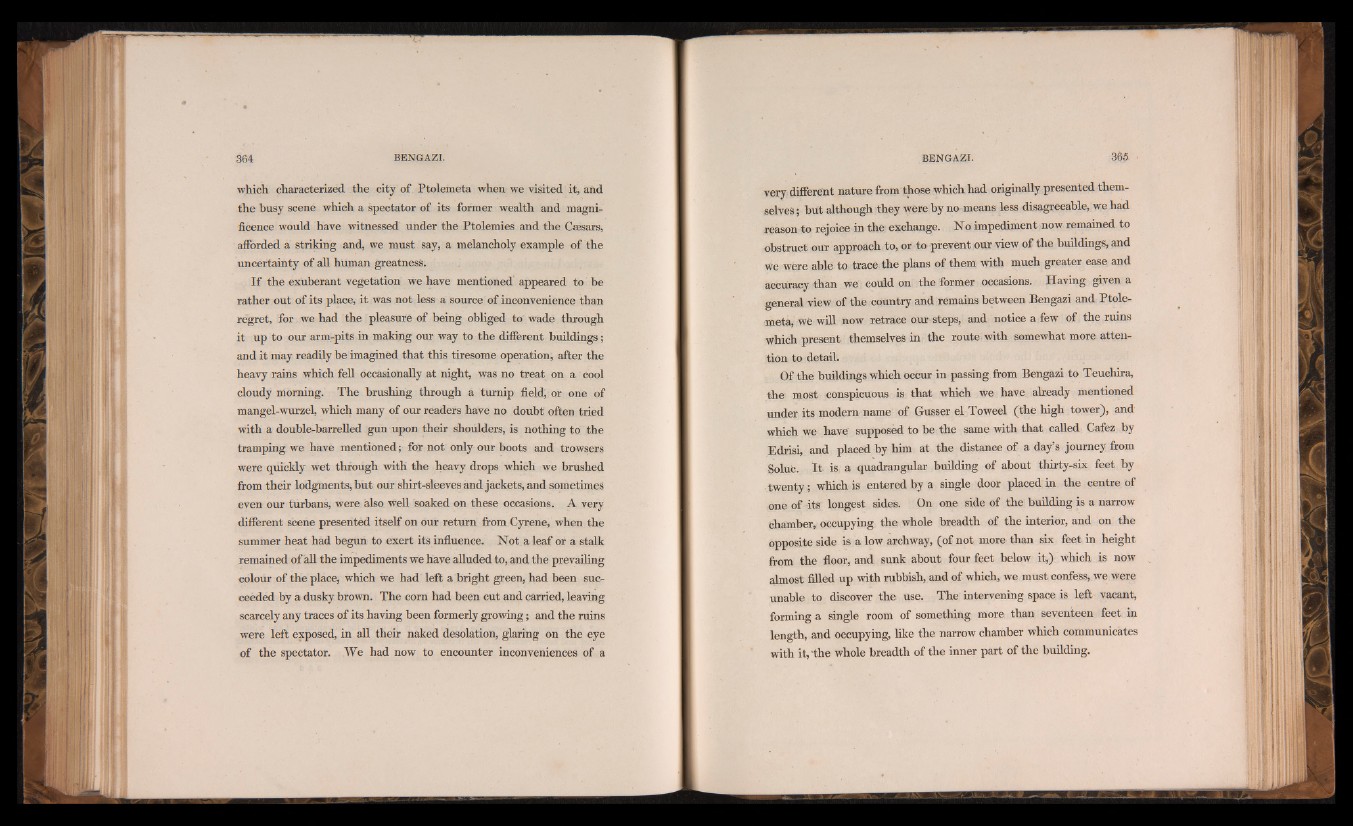
which characterized the city of Ptolemeta when we visited it, and
the busy scene which a spectator of its former wealth and magnificence
would have witnessed under the Ptolemies and the Caesars,
afforded a striking and, we must say, a melancholy example of the
uncertainty of all human greatness.
If the exuberant vegetation we have mentioned appeared to be
rather out of its place, it was not less a source of inconvenience than
regret, for we had the pleasure of being obliged to wade through
it up to our arm-pits in making our way to the different buildings;
and it may readily be imagined that this tiresome operation, after the
heavy rains which fell occasionally at night, was no treat on a cool
cloudy morning. The brushing through a turnip field, or one of
mangel-wurzel, which many of our readers have no doubt often tried
with a double-barrelled gun upon their shoulders, is nothing to the
tramping we have mentioned; for not only our boots and trowsers
were quickly wet through with the heavy drops which we brushed
from their lodgments, but our shirt-sleeves and jackets, and sometimes
even our turbans, were also well soaked on these occasions. A very
different scene presented itself on our return from Cyrene, when the
summer heat had begun to exert its influence. Not a leaf or a stalk
remained of all the impediments we have alluded to, and the prevailing
colour of the place, which we had left a bright green, had been succeeded
by a dusky brown. The corn had been cut and carried, leaving
scarcely any traces of its having been formerly growing; and the ruins
were left exposed, in all their naked desolation, glaring on the eye
of the spectator. We had now to encounter inconveniences of a
very different nature from those which had originally presented themselves
; biit although they were by no means less disagreeable, we had
reason to rejoice in the exchange. No impediment now remained to
obstruct our approach to, or to prevent our view of the buildings, and
we were able to trace the plans of them with much greater ease and
accuracy than we could on the former occasions. Having given a
general view of the country and remains between Bengazi and Ptolemeta,
we will now retrace our steps, and notice a few of the ruins
which present themselves in the route with somewhat more attention
to detail.
Of the buildings which occur in passing from Bengazi to Teuchira,
the most conspicuous is that which we have already mentioned
under its modern name of Gusser el Toweel (the high tower), and
which we have supposed to be the same with that called Cafez by
Edrisi, and placed by him at the distance of a day’s journey from
goluc. I t is a quadrangular building of about thirty-six feet by
twenty; which is entered by a single door placed in the centre of
one of its longest sides. On one side of the building is a narrow
chamber, occupying the whole breadth of the interior, and on the
opposite side is a low archway, (of not more than six feet in height
from the floor, and sunk about four feet below it,) which is now
almost filled up with rubbish, and of which, we must confess, we were
unable to discover the use. The intervening space is left vacant,
forming a single room of something more than seventeen feet in
length, and occupying, like the narrow chamber which communicates
with it, ‘the whole breadth of the inner part of the building.